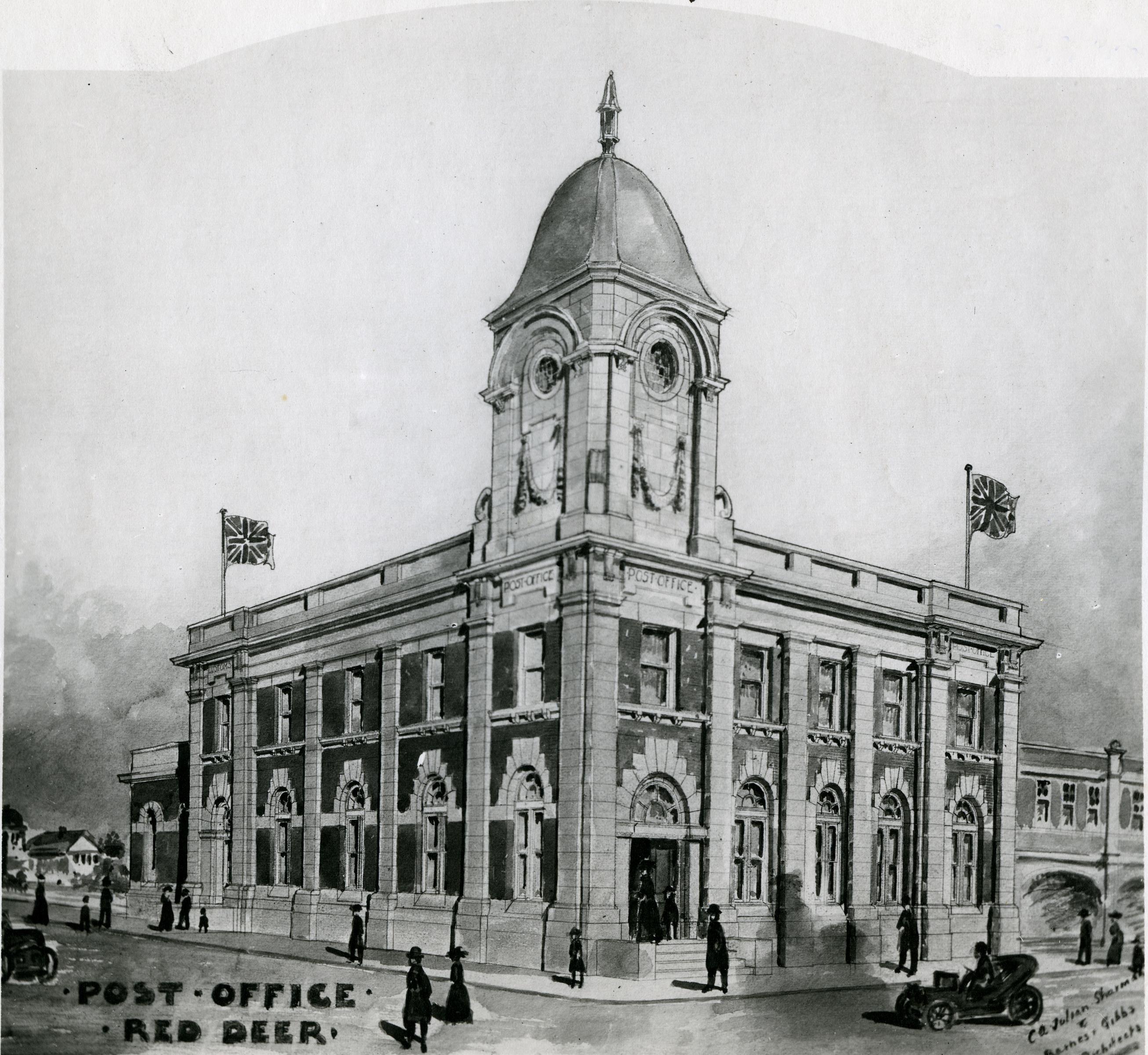On Jan. 16, 1912, 100 years ago, Red Deer got the exciting news that the federal government would be constructing a brand new post office in the community. Moreover, it was indicated that an armoury would also be constructed.
The announcement meant that Red Deer would soon be gaining two new landmark public buildings. The projects would also provide several construction jobs and quite a few long-term jobs afterwards.
Red Deer had already started to become a military training centre. In 1907, a local squadron of the 15th Light Horse had been formed. However, the men were forced to use the curling rink on Morrison (52) St. for drills.
Now, there would be a proper, year-round facility that would not have to be shared with the local curling club. Moreover, a new militia unit, the 35 Central Alberta Horse, was created with the Red Deer Armoury to become the regimental headquarters. Red Deer was becoming the regional military centre for Central Alberta.
Work proceeded steadily on the new armoury. There was some delay, as town council did not want to have it constructed on the civic square next to the Town Hall. That land was supposed to be reserved for municipal purposes. However, the federal government stated that if Red Deer wanted a new armoury, council would agree to the federal government’s preferred location or risk losing the building altogether.
The building was finished in January 1914. The completion proved fortuitous as seven months later, the First World War broke out. For once, a recruitment and training facility was already in place, instead of having to be hastily constructed after war was declared.
In contrast to the armoury project, the new post office was beset with delays and problems. Red Deer’s MLA and the Leader of the Opposition in the Alberta Legislature, Edward Michener, faced a challenge in getting re-elected in the pending 1913 provincial election. The new Red Deer post office was meant to give Michener a much needed boost from his conservative party allies in Ottawa.
However, although the money was approved and design work was started, the project became stalled. In order to prove the seriousness of the promise, an architect’s sketch of the new building was published. A large hole was dug on the proposed site on the southwest corner of Ross St. and MacKenzie (49) Ave., next to the Dominion Land Titles Office.
Michener managed to eke out a narrow re-election win in April 1913, but nothing more happened with the post office. No basement foundation was poured. The excavation on the Ross Street corner remained an open pit.
After the First World War broke out, the federal government quite reasonably stated that all its energies were being turned to the war effort. Public works projects such as a new post office for Red Deer would have to wait.
Red Deer City council and the Board of Trade kept lobbying the federal government to remember its promise. Red Deer’s population had quadrupled over the preceding decade. The existing rented space for the post office in the Red Deer News building was very inadequate.
After the war, the federal government continued to drag its feet, despite increasing public pressure. Finally, the government announced plans to renovate the old land titles office to turn it into a post office. Many felt that this would not provide much more space than in the current rented quarters. It would also give the government an ‘out’ from keeping its promise of a new building.
Despite a change in government in 1921, plans to convert the land titles office proceeded. The space was barely adequate to cover the needs of the community. When Red Deer began to grow rapidly again at the time of the Second World War, the post office became so overcrowded that mail bags sometimes had to be stored outside.
Finally, a new post office building was constructed in 1950-1951. Only 39 years had passed since the original promise of a new building had been made.



